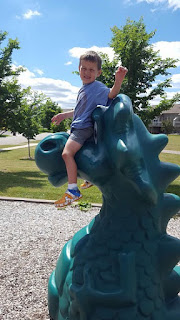ASHER Syndrome, no longer unnamed
So long story short this blog was started and a friend of a friend of a friend, read my cry for
help and passed it on to a colleague at the NIH. With the assistance of our Genetics Clinic here, and several emails and using the UDN; we were able to go to the NIH out in Maryland and spend a very long, grueling but important week collecting data. The researchers and I kept in touch through the last few years and we even had spoke with more researchers along the way, in fact Asher is mentioned in another research publication in his discussion of human ATG variants.
Covid happened and of course the whole world slowed down but about a year ago, I was asked to come to a virtual meeting with the researchers at the NIH and other physicians. They went over their findings and told me the paper was almost completed and then would be submitted for publication. They asked what my goals out of the publication would be and I said, I would like to find others to perhaps gather more information. I explained this work is part of my son's legacy, that this work may or may not change his life but it will help others so they do not have to go through what we have. I also asked if it was going to be named.
A name? Right!?! It changes nothing, the path and the outcome is still the same however to us a name was huge. A name means this no longer some vague mashing together of words in chart, or having to describe it by his symptoms and people look at you and say, "Yeah, but what's it called?" A name means this is real.
It was decided they would name it ASHER Syndrome, ATG4D-related, Spectrum of cerebellar findings, Hypotonia and joint laxity, Early Onset, Regression or delay. I cried when they suggested it. Tears of honor, joy, relief, and a little sadness.
The very same emotions were felt on Friday, February 10,2023, when the article was published and now its out there for the world to see. All of the hard work of the researchers and myself paid off. Its out there now and maybe just maybe more to come...




Comments
Post a Comment